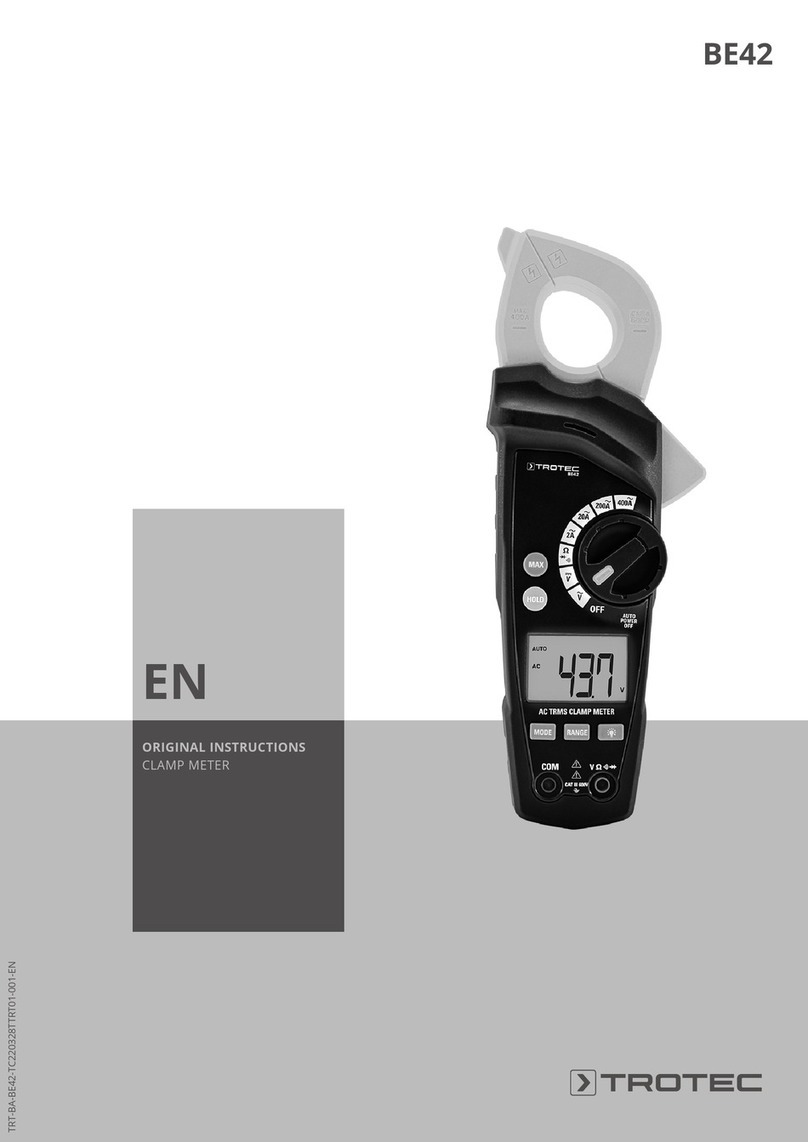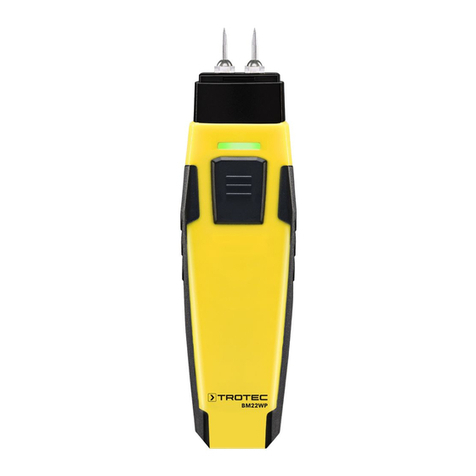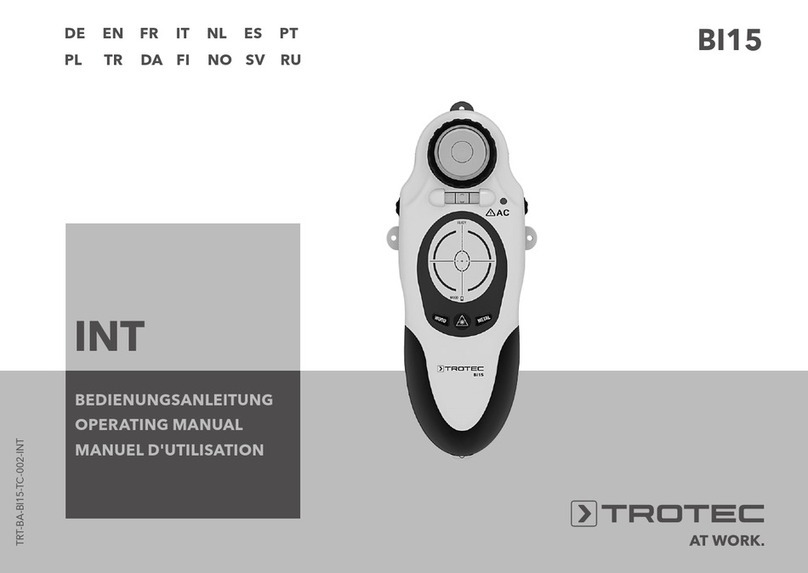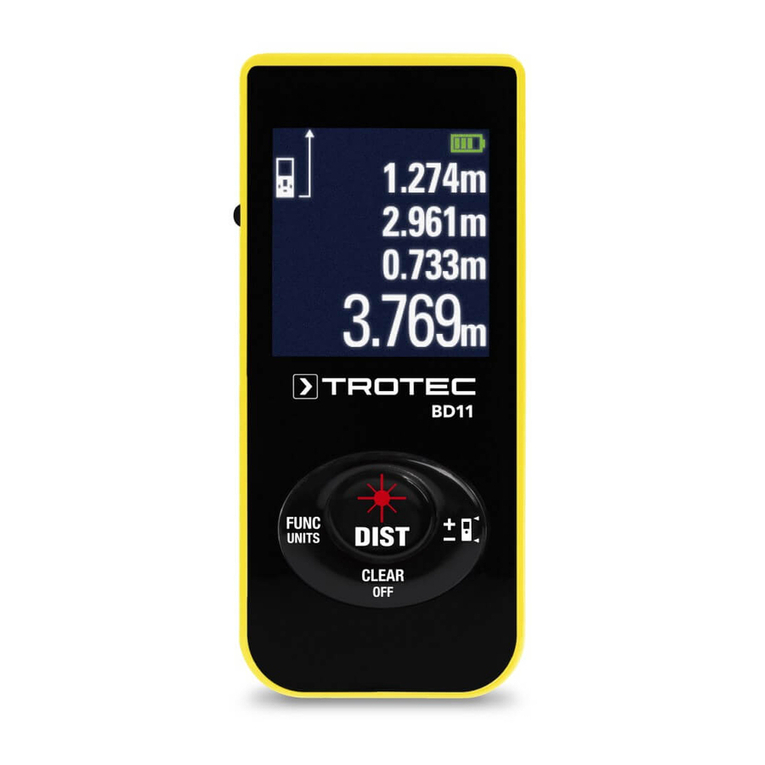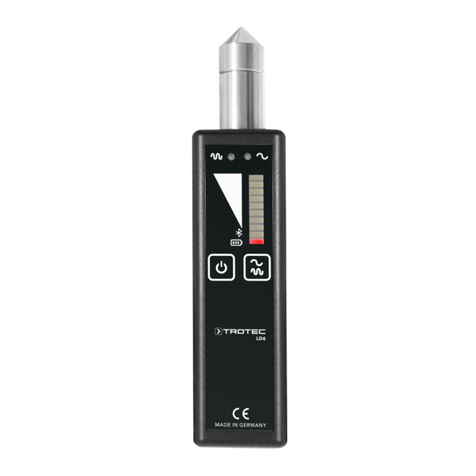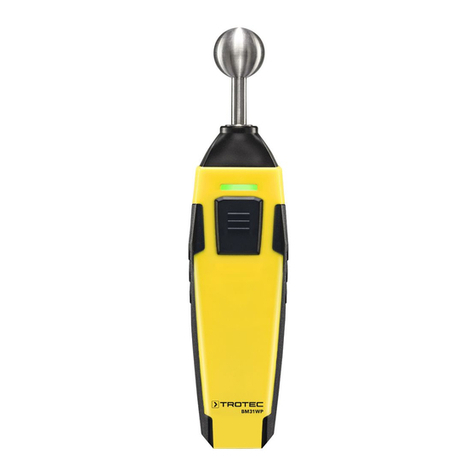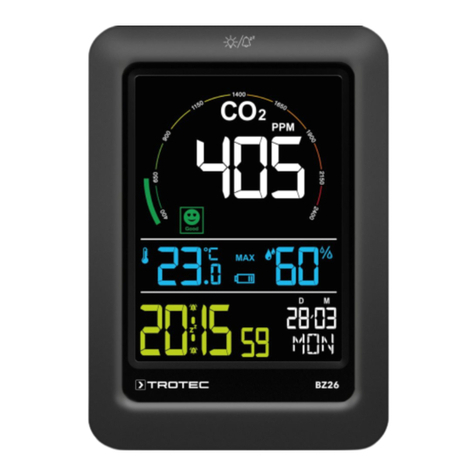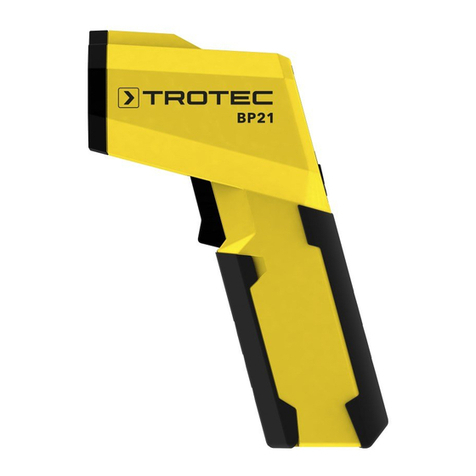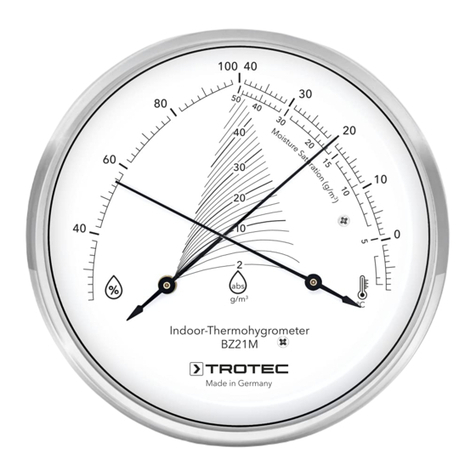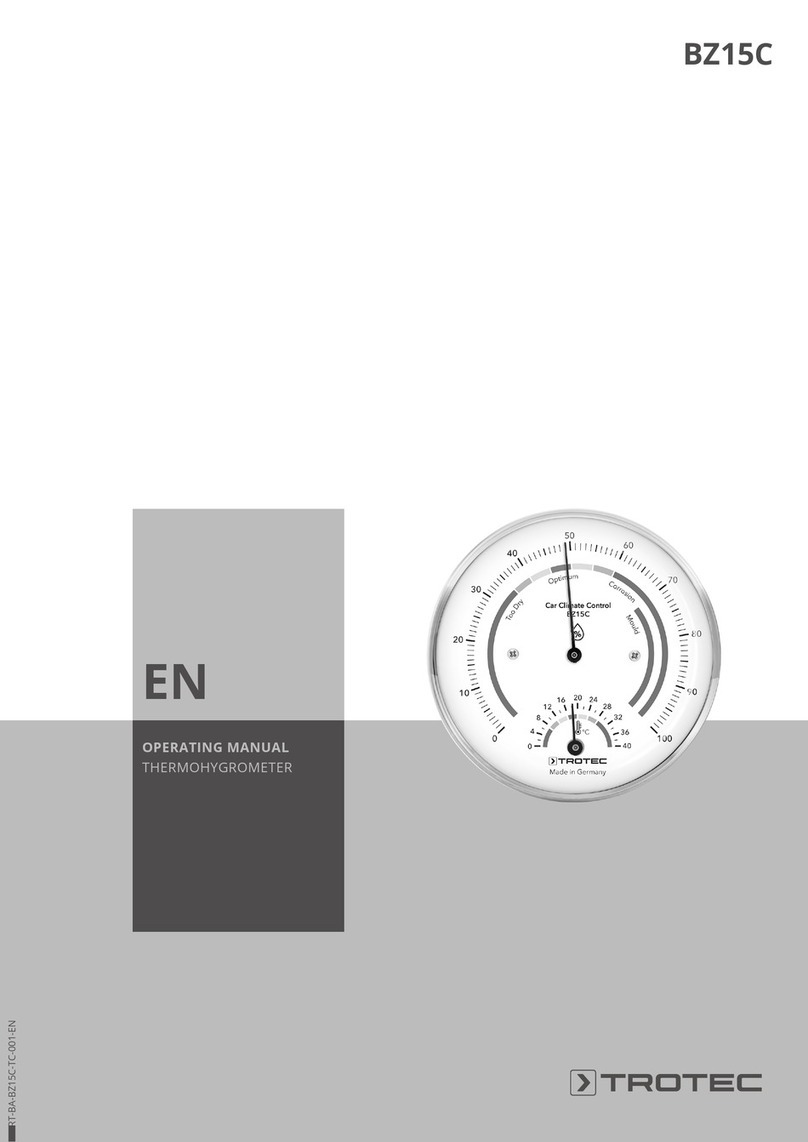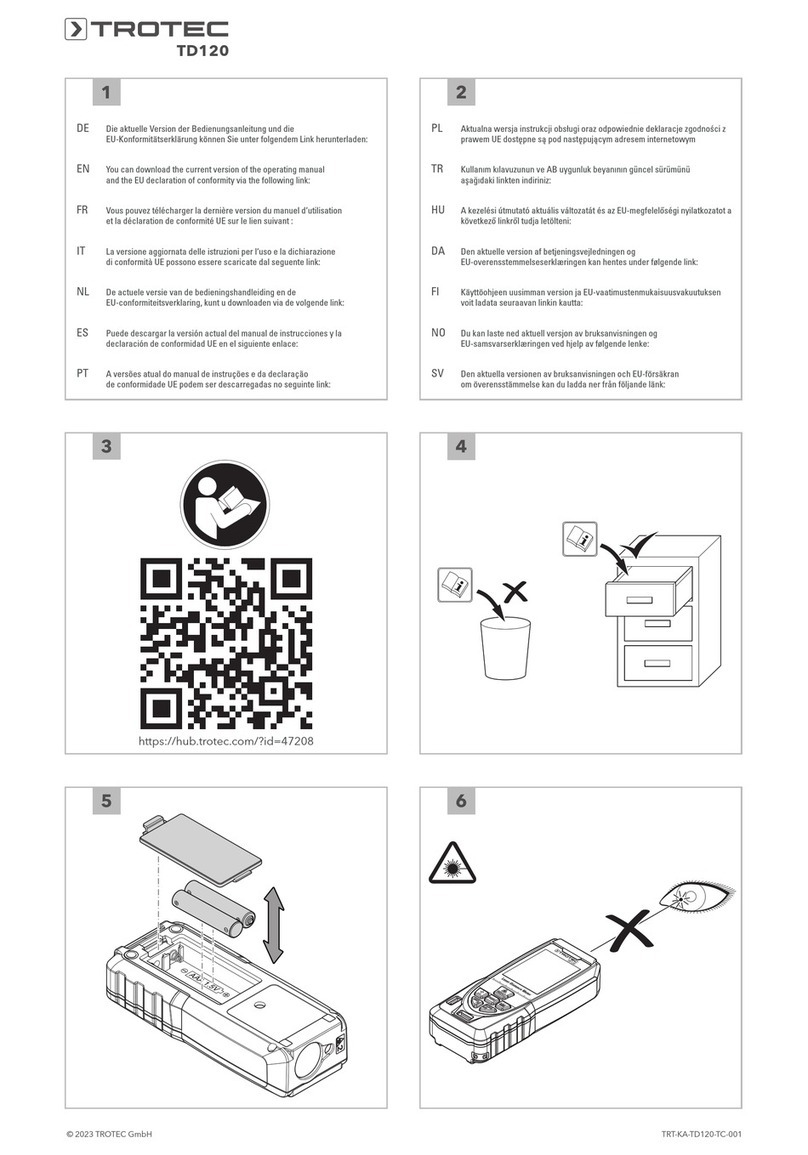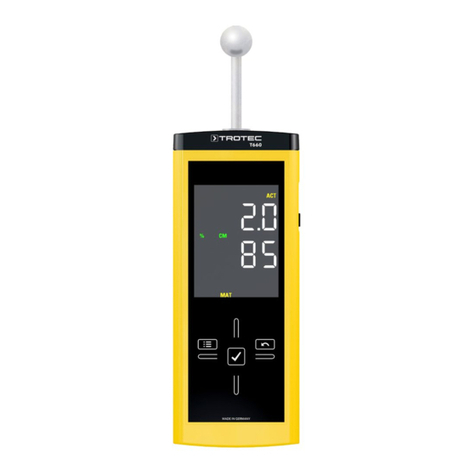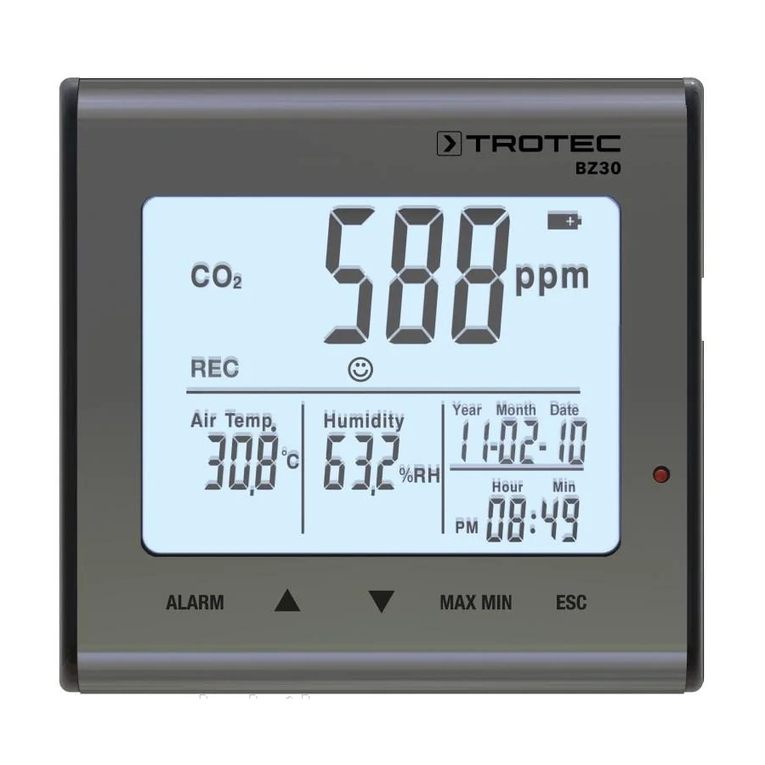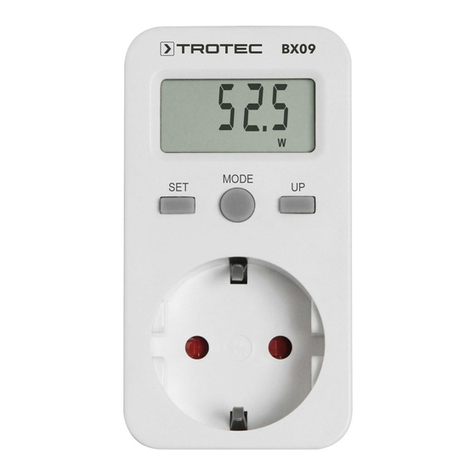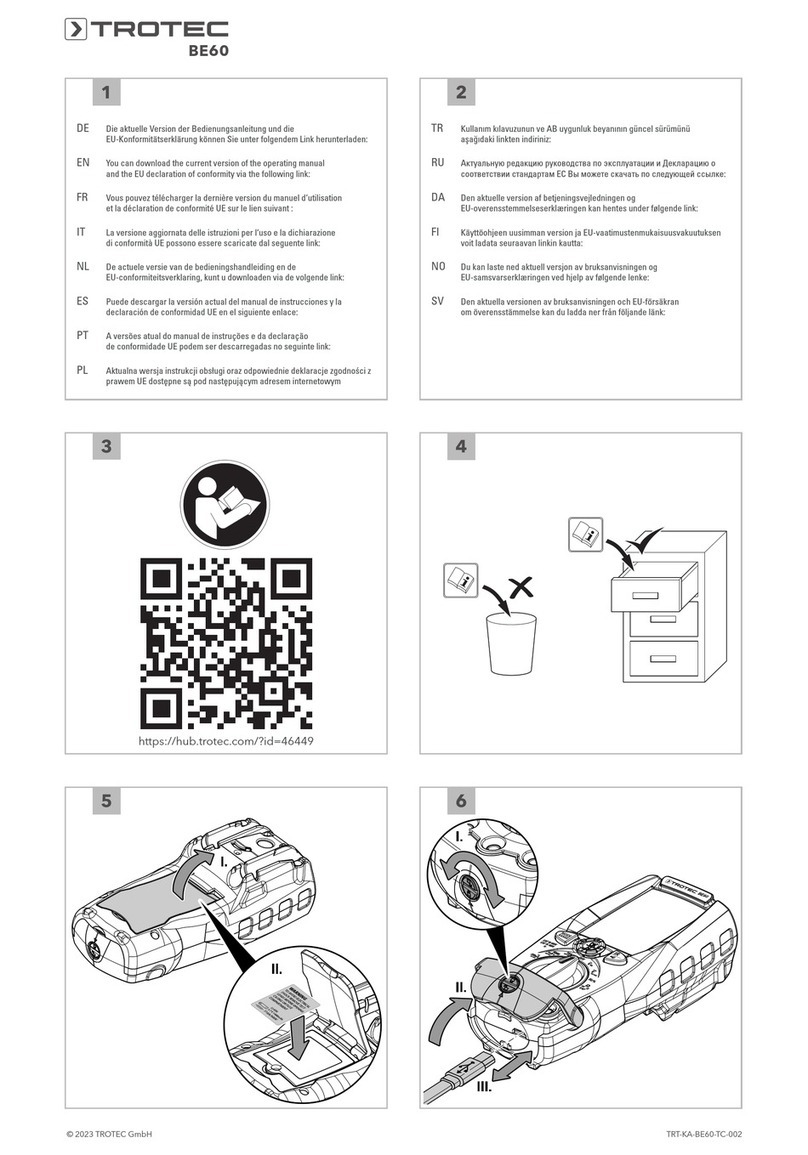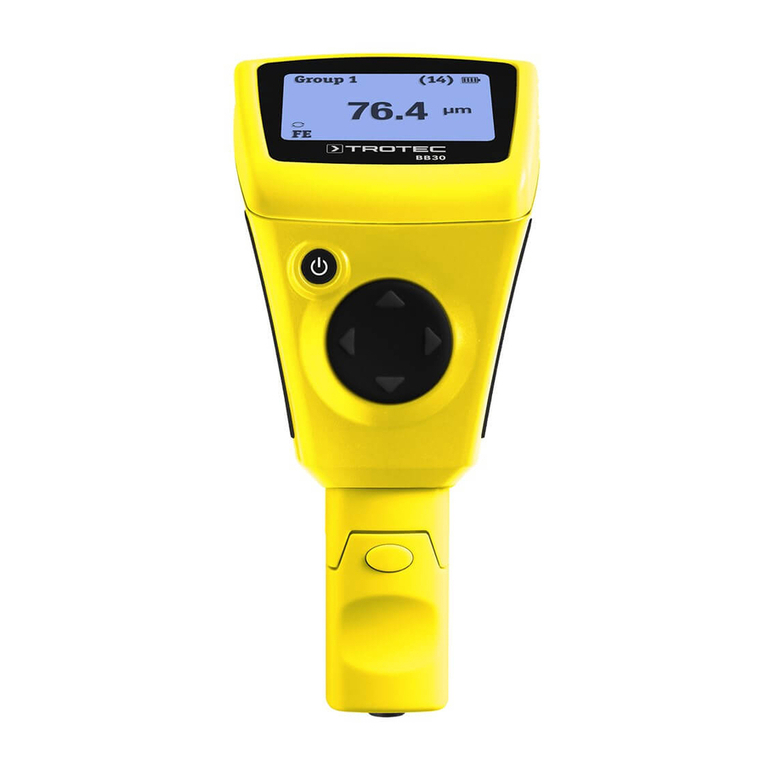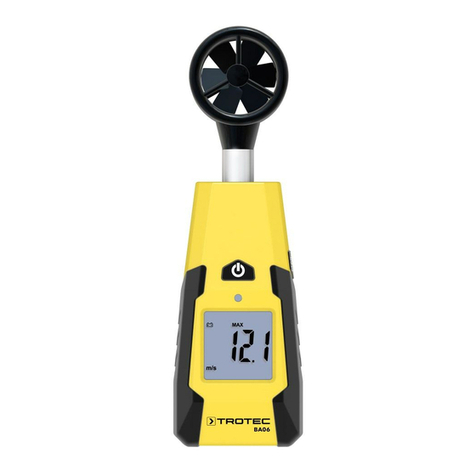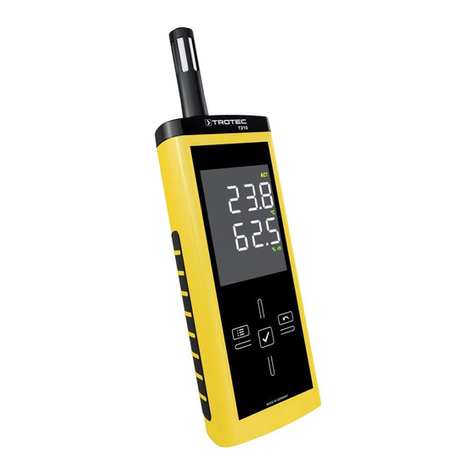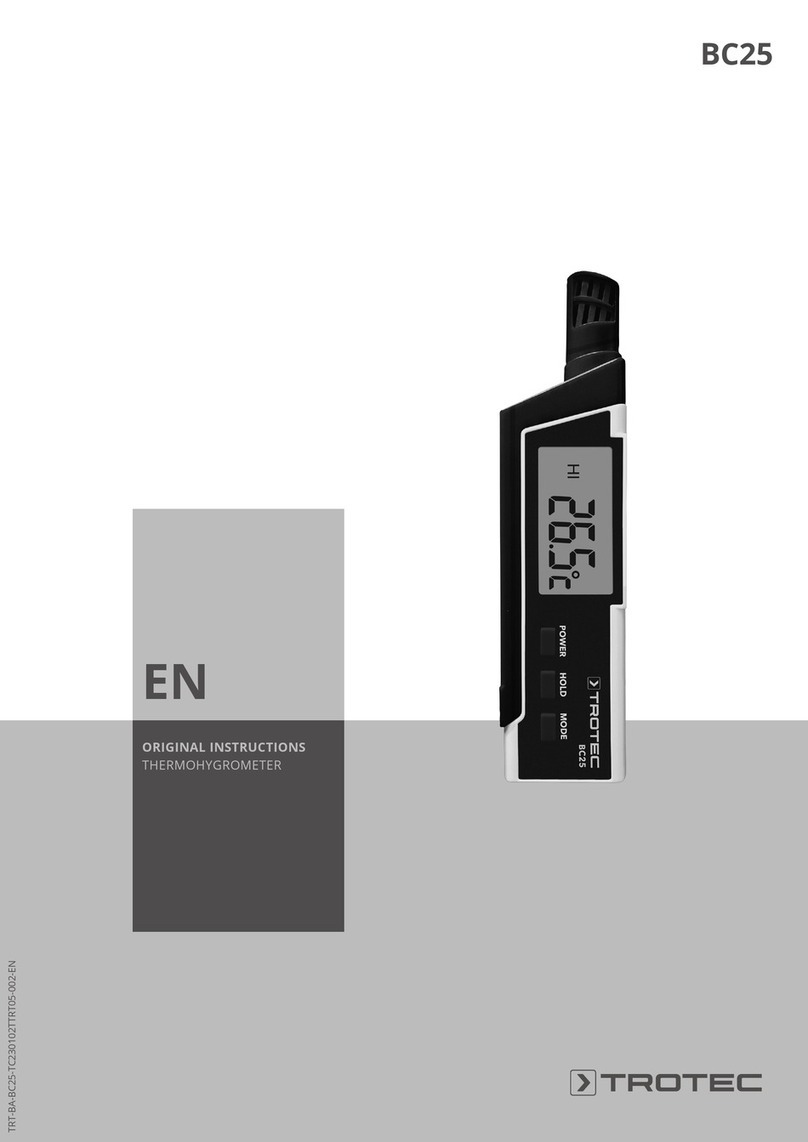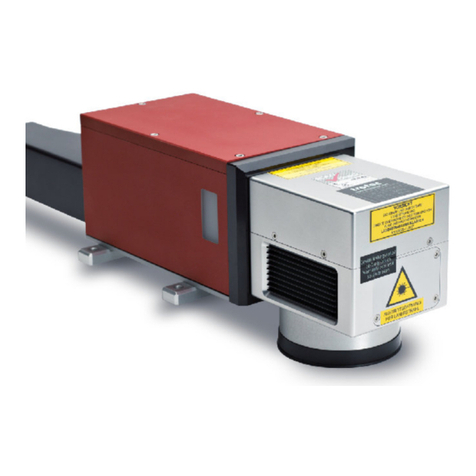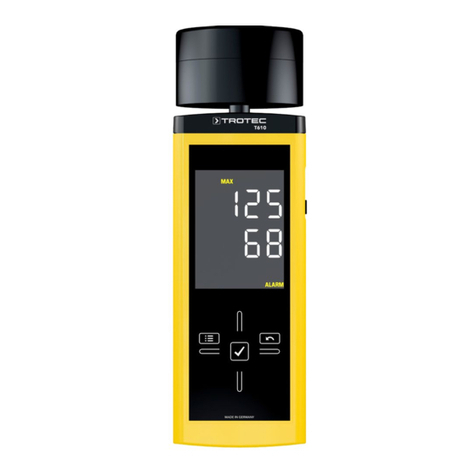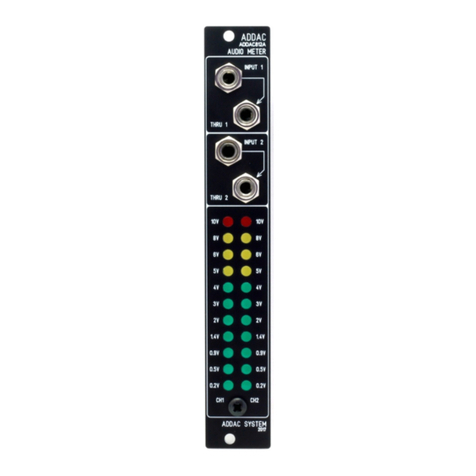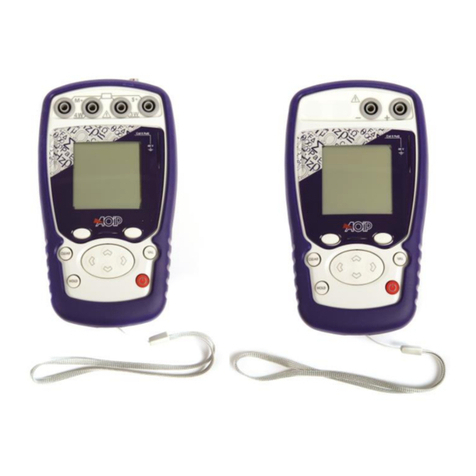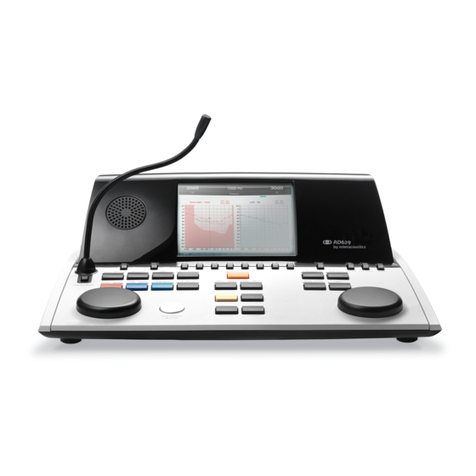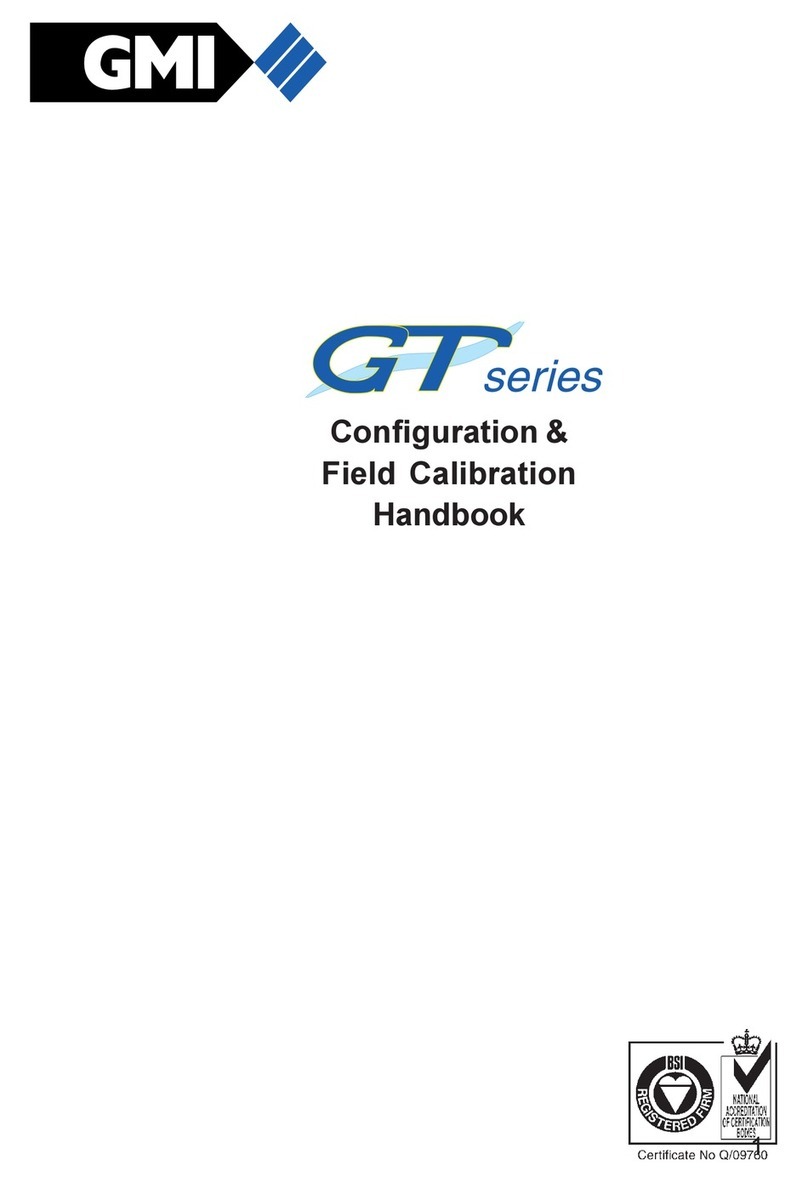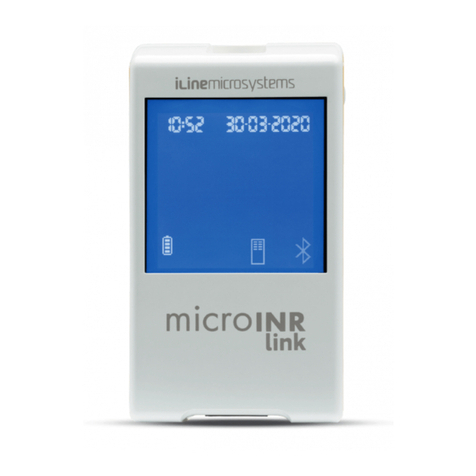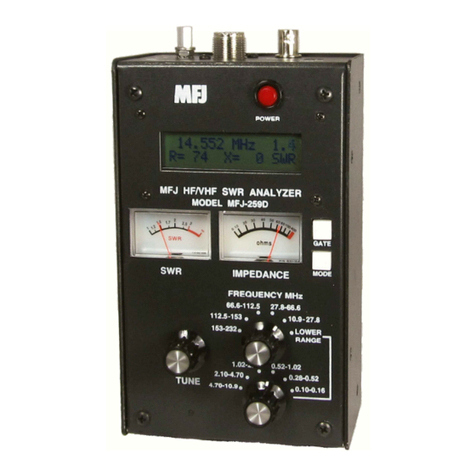Trotec BM40 User manual

TRT-BA-BM40-TC230214TTRT01-005-EN
BM40
EN
ORIGINAL INSTRUCTIONS
MOISTURE MEASURING DEVICE

2 EN
moisture measuring device BM40
Table of contents
Notes regarding the instructions .........................................2
Safety .....................................................................................2
Information about the device................................................4
Transport and storage...........................................................5
Operation ...............................................................................6
Measuring principle ..............................................................7
Maintenance and repair ........................................................8
Errors and faults....................................................................8
Disposal .................................................................................9
Notes regarding the instructions
Symbols
Warning of electrical voltage
This symbol indicates dangers to the life and health of
persons due to electrical voltage.
Warning
This signal word indicates a hazard with an average
risk level which, if not avoided, can result in serious
injury or death.
Caution
This signal word indicates a hazard with a low risk
level which, if not avoided, can result in minor or
moderate injury.
Note
This signal word indicates important information (e.g.
material damage), but does not indicate hazards.
Info
Information marked with this symbol helps you to carry
out your tasks quickly and safely.
Follow the manual
Information marked with this symbol indicates that the
instructions must be observed.
You can download the current version of the instructions and
the EUdeclaration of conformity via the following link:
BM40
https://hub.trotec.com/?id=41251
Safety
Read this manual carefully before starting or using the
device. Always store the manual in the immediate vicinity
of the device or its site of use.
Warning
Read all safety warnings and all instructions.
Failure to follow the warnings and instructions may
result in electric shock, fire and/or serious injury.
Save all warnings and instructions for future
reference.
• Do not use the device in potentially explosive rooms or
areas and do not install it there.
• Do not use the device in aggressive atmosphere.
• Do not immerse the device in water. Do not allow liquids to
penetrate into the device.
• The device may only be used in dry surroundings and must
not be used in the rain or at a relative humidity exceeding
the operating conditions.
• Protect the device from permanent direct sunlight.
• Do not expose the device to strong vibrations.
• Do not remove any safety signs, stickers or labels from the
device. Keep all safety signs, stickers and labels in legible
condition.
• Do not open the device.
• Never charge batteries that cannot be recharged.
• Different types of batteries and new and used batteries
must not be used together.
• Insert the batteries into the battery compartment according
to the correct polarity.
• Remove discharged batteries from the device. Batteries
contain materials hazardous to the environment. Dispose
of the batteries according to the national regulations.
• Remove the batteries from the device if you will not be
using the device for a longer period of time.
• Never short-circuit the supply terminal in the battery
compartment!

EN 3
moisture measuring device BM40
• Do not swallow batteries! If a battery is swallowed, it can
cause severe internal burns within2hours! These burns
can lead to death!
• If you think batteries might have been swallowed or
otherwise entered the body, seek medical attention
immediately!
• Keep new and used batteries and an open battery
compartment away from children.
• Observe the storage and operating conditions (see
Technical data).
Intended use
Only use the device for moisture measurements of wood and
building materials within the measuring range specified in the
technical data.
To use the device for its intended use, only use accessories and
spare parts which have been approved by Trotec.
Foreseeable misuse
Do not use the device in potentially explosive atmospheres, for
measurements in liquids or at live parts.
Any unauthorised changes, modifications or alterations to the
device are forbidden.
Personnel qualifications
People who use this device must:
• have read and understood the instructions, especially the
Safety chapter.
Residual risks
Warning of electrical voltage
There is a risk of a short-circuit due to liquids
penetrating the housing!
Do not immerse the device and the accessories in
water. Make sure that no water or other liquids can
enter the housing.
Warning of electrical voltage
Work on the electrical components must only be
carried out by an authorised specialist company!
Warning
Risk of suffocation!
Do not leave the packaging lying around. Children may
use it as a dangerous toy.
Warning
The device is not a toy and does not belong in the
hands of children.
Warning
Dangers can occur at the device when it is used by
untrained people in an unprofessional or improper way!
Observe the personnel qualifications!
Caution
Keep a sufficient distance from heat sources.
Note
To prevent damages to the device, do not expose it to
extreme temperatures, extreme humidity or moisture.
Note
Do not use abrasive cleaners or solvents to clean the
device.

4 EN
moisture measuring device BM40
Information about the device
Device description
The device BM40 is suited for the non-destructive material
moisture measurement in mineral building materials and wood.
The measuring probe is pressed against the material to be
tested. The moisture level is then measured by capacitive
sensors using the dielectric measurement method, which is
absolutely non-destructive since no electrodes or probes have
to be inserted into the material.
For an increased accuracy of the measured values, which are
directly indicated in % by weight, there are 10selectable
material curves available for the most important types of wood
and building materials.
The device further features the following functions:
• Real-time measurement value display
• Temperature measurement
• Automatic switch-off
Device depiction
1
2
3
4
BM40
No. Designation
1 Measuring probe
2 Display
3Power/ MODE button
4 Battery compartment with cover
Display
5
6
7
8
9
No. Designation
5 Measuring mode indication
6 °C / °F indication
7 % indication
8 Measurement value indication
9 Battery indication

EN 5
moisture measuring device BM40
Technical data
Parameter Value
Model BM40
Measuring principle Dielectric/capacitive
Electrode length Approx. 40 mm
Penetration depth, non-destructive 0 mm to 50 mm
Measuring
range
Solid brick 0 % to 20 %
Anhydrite screed 0 % to 20 %
Cement screed 0 % to 20 %
Sand-lime brick 0 % to 20 %
Gas concrete 0 % to 20 %
High-insulating brick 0 % to 20 %
Concrete 0 % to 20 %
Hardwood 0 % to 50 %
Softwood 0 % to 50 %
Chipboard 0 % to 50 %
Temperature -10°C to 55°C
Resolution Wood 0.1 %
Mineral building materials 0.1 %
Temperature 0.1°C
Ambient temperature -5 to 50°C with
0 to 85%RH
Power supply 1 x 9V battery
Automatic switch-off After approx. 10min
Dimensions (length x width x height) 168 x 35 x 75 mm
Weight 220 g
Scope of delivery
• 1 x Moisture measuring device
• 1 x 9V battery
• 1 x Quick guide
Transport and storage
Note
If you store or transport the device improperly, the
device may be damaged.
Note the information regarding transport and storage of
the device.
Transport
For transporting the device use a suitable bag to protect it from
external influences.
Storage
When the device is not being used, observe the following
storage conditions:
• dry and protected from frost and heat
• protected from dust and direct sunlight
• the storage temperature complies with the values specified
in the Technical data
• Battery is removed from the device

6 EN
moisture measuring device BM40
Operation
Inserting the battery
Insert the supplied battery into the device before first use.
Note
Make sure that the surface of the device is dry and the
device is switched off.
+ -
1. Open the battery compartment at the rear of the device by
sliding down the cover.
2. Use the battery clip to connect the 9V battery with correct
polarity.
3. Place the battery with the battery clip into the battery
compartment.
4. Slide the cover back onto the battery compartment until it
locks in place.
Switching the device on
Info
Please note that moving from a cold area to a warm
area can lead to condensation forming on the device's
circuit board. This physical and unavoidable effect can
falsify the measurement. In this case, the display
shows either no measured values or they are incorrect.
Wait a few minutes until the device has become
adjusted to the changed conditions before carrying out
a measurement.
1. Press the Power button(3) for approx. 1seconds.
ðThe device starts in the measuring mode°C.
ðThe measured value is displayed in real time on the
measurement value display(8).
Selecting the measuring mode
For an increased accuracy of the measured values, which are
directly indicated in % by weight, 10selectable material curves
are available for the following types of wood and building
materials:
Measuring
mode
Designation Measuring range
B1 Solid brick 0% to 20%
B2 Anhydrite screed 0% to 20%
B3 Cement screed 0% to 20%
B4 Sand-lime brick 0% to 20%
B5 Gas concrete 0% to 20%
B6 High-insulating brick 0% to 20%
B7 Concrete 0% to 20%
H1 Hardwood (e.g. maple, birch,
beech, Douglas fir, oak, ash,
walnut)
0% to 50%
H2 Softwood (e.g. spruce, pine,
cherry, larch, Meranti, poplar)
0% to 50%
H3 Chipboard 0% to 50%
°C Temperature -10 °C to 55 °C
1. Repeatedly press the MODE button(3) until the desired
measuring mode is set.
Moisture measurement
Info
When pressing the contact surface of the measuring
probe against the object, apply a steady contact
pressure (approx. 10N which corresponds to approx.
1kg of weight force) but do not bend it to the point of
overlapping.
In order to become a better judge of what the right
level of contact pressure might be, we recommend
pressing the device a few times against a pair of
scales.
1. Select the desired measuring mode.
2. Hold the device against the object at an angle of 90° and
make sure that the entire width of the measuring probe
rests on the contact surface.
ðThe measured value is displayed in real time on the
measurement value display(8).
Switching the device off
The device switches off after approx. 10minutes of non-use.
1. Press the Power button(3) for approx. 3seconds.
ðThe device switches off.

EN 7
moisture measuring device BM40
Measuring principle
The measuring device at hand serves for the rough
determination of the material or wood moisture content
according to the dielectric measuring principle. Fields of
application include the non-destructive moisture measurement
of sawn timber, lumber and firewood as well as of mineral
building materials.
The dielectric measuring method is an indirect measurement
method, since the moisture content of the measured material is
deduced from the changed dielectric permittivity.
Influencing variables suitable to change this parameter, e.g.
electrically conducting materials or dissolved salts, hence also
have a direct influence on the determined measured values.
Since the exact composition of building materials is generally
unknown before a moisture measurement, the displayed
measured values can only be regarded as an indicator of the
moisture content.
General notes on use
Calibration curves for measuring the moisture level in different
mineral building materials, hardwood, softwood and chipboard
are stored in the device. If precise material moisture values are
required, an additional control measurement applying the Darr
procedure is recommended. Especially for precise wood
moisture measurements for other wood temperatures or with
due regard to the type and bulk density of a certain timber it is
recommended to use a wood moisture measuring device with
temperature comparison function and selection option for the
specific wood type calibration.
• When selecting the measuring positions observe the
following:
– Always measure the material moisture at three different
positions in order to achieve a sufficient accuracy by
means of the arithmetic average.
– Do not measure the face, because there are mainly dry
areas.
– Preferably do not measure at cracks, branches or resin
pockets either.
• The measurement results are only to be used as reference
for a rough orientation.
• The height of the measured value can be calculated from
the determined dielectric constant of the measured
material. Dry air has a constant of 1, water 80. Hence, the
more humidity is contained in the material, the higher will
be the displayed measured value.
• Another important variable influencing the measured value
is the bulk density of the good to be measured. The higher
the bulk density, the higher the measured value.
Notes on use regarding the material moisture measurement
No further settings are required for the quick determination of
the material moisture at the device. Nevertheless, when
assessing the measurement results one has to bear in mind that
the results can be influenced by various factors.
• Performing the measurement
– The measurement's accuracy depends on the contact
pressure of the measuring electrodes. Ideally, they
should be applied with a steady contact pressure of
approx. 10N (this corresponds to approx. 1kg of
weight force), however not bent to the point of
overlapping.
• Measuring depth
– Depending on the material's bulk density and degree of
moisture penetration, the device's penetration depth
ranges up to 40mm. Conclusions regarding zones
located at a lower level cannot be drawn.
• Material characteristics
– Increased occurrences of soluble salts in the measured
material can distort the result of the measurement. The
more salts present, the higher the conductivity of the
material and the higher will be the displayed
measurement value.
– If possible, do not measure wood with a temperature
below -5 °C. Too low wood temperatures distort the
result of the measurement.
– Material aggregates and their concentration, e.g. in
screed or concrete, can also considerably influence the
height of the measured value.
– The material should be preferably homogenous and not
have any air pockets.

8 EN
moisture measuring device BM40
• Electrically conducting materials or electrical fields
– If a construction material contains electrically
conducting substances, the dielectric constant is also
increased, which then simulates high moisture values.
Consequently, a too high measured value will be
displayed.
– If the material to be measured contains metal (e.g.
nails, screws, lines, pipes, etc.) and is situated within
the sensor's measuring field, the measured value
skyrockets due to intense reflections.
– From visual inspection it is not always apparent,
whether there are any electrically conducting
substances inside the construction material. Some of
the main error sources here are in particular
reinforcements, metal laminations and conducting
insulation such as slag in timber beam ceiling
constructions. Especially in case of insulation materials
with metal lamination, measured values are often
misinterpreted.
– Avoid static charge of the material to be measured due
to friction. Static charge distorts the measurement
result.
– With a wood moisture of less than 10%RH,
electrostatic forces may occur at the good to be
measured. This can falsify the result of the
measurement. Experience has shown that this occurs at
the outlet of veneer drying plants. Remove the static
charge by use of suitable grounding measures.
– For optimum conditions neither electrical fields nor
conducting materials should be present.
• Surface condition
– Before measuring, the measuring point is to be cleared
of any impurities (e.g. paint residues, dust).
– Oily and/or aqueous timber preservatives affect the
measurement result.
– Rough surfaces will always result in a too low
measured value.
– The surface of the material to be measured should be
as level as possible to permit thorough contact of the
measuring probe.
• Moisture distribution
– With material thicknesses of less than 2 cm there is a
danger of humidity values from adjacent material layers
affecting the measured value.
– Ideally, the moisture should be evenly distributed within
the material to be measured.
Quantitative conclusions about the moisture content of the
mineral material to be measured can only be drawn by applying
the Darrprocedure or the CMmethod.
Maintenance and repair
Battery change
A battery change is required when the battery indication(9) is
displayed or the device can no longer be switched on (see
chapter Inserting the battery).
Cleaning
Clean the device with a soft, damp and lint-free cloth. Make
sure that no moisture enters the housing. Do not use any
sprays, solvents, alcohol-based cleaning agents or abrasive
cleaners, but only clean water to moisten the cloth.
Repair
Do not modify the device or install any spare parts. For repairs
or device testing, contact the manufacturer.
Errors and faults
The device has been checked for proper functioning several
times during production. If malfunctions occur nonetheless,
check the device according to the following list.
Display segments are only faintly visible or flicker:
• The battery voltage is too low. Exchange the battery
immediately.
The device displays implausible measured values:
• The battery voltage is too low. Exchange the battery
immediately.

EN 9
moisture measuring device BM40
Disposal
Always dispose of packing materials in an environmentally
friendly manner and in accordance with the applicable local
disposal regulations.
The icon with the crossed-out waste bin on waste
electrical or electronic equipment is taken from Directive
2012/19/EU. It states that this device must not be disposed of
with the household waste at the end of its life. You will find
collection points for free return of waste electrical and electronic
equipment in your vicinity. The addresses can be obtained from
your municipality or local administration. You can also find out
about other return options that apply for many EU countries on
the website https://hub.trotec.com/?id=45090. Otherwise,
please contact an official recycling centre for electronic and
electrical equipment authorised for your country.
The separate collection of waste electrical and electronic
equipment aims to enable the re-use, recycling and other forms
of recovery of waste equipment as well as to prevent negative
effects for the environment and human health caused by the
disposal of hazardous substances potentially contained in the
equipment.
In the European Union, batteries and accumulators must
not be treated as domestic waste, but must be disposed of
professionally in accordance with Directive 2006/66/EC of the
European Parliament and of the Council of 6September2006
on batteries and accumulators. Please dispose of batteries and
accumulators according to the relevant legal requirements.
Only for United Kingdom
According to Waste Electrical and Electronic Equipment
Regulations 2013 (SI2013/3113) (as amended) and the Waste
Batteries and Accumulators Regulations 2009 (SI2009/890) (as
amended), devices that are no longer usable must be collected
separately and disposed of in an environmentally friendly
manner.

Trotec GmbH
Grebbener Str. 7
D-52525 Heinsberg
+49 2452 962-400
+49 2452 962-200
www.trotec.com
Other manuals for BM40
1
Table of contents
Other Trotec Measuring Instrument manuals
Popular Measuring Instrument manuals by other brands
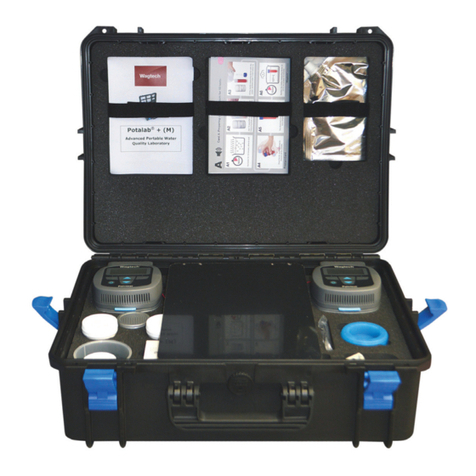
palintest
palintest Wagtech Potalab+ (M) manual

PCB Piezotronics
PCB Piezotronics 3741F1210G Installation and operating manual

GF
GF Signet 5500 manual
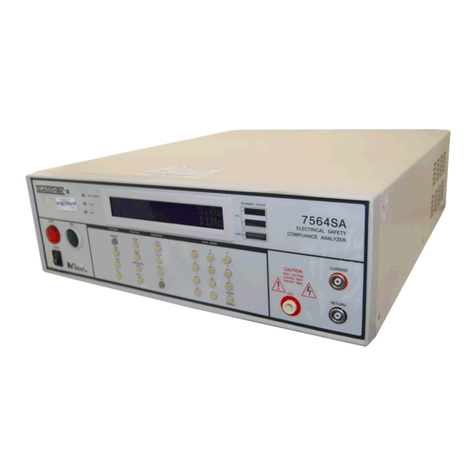
Associated Research
Associated Research Quadchek II 7504SA Operation and service manual
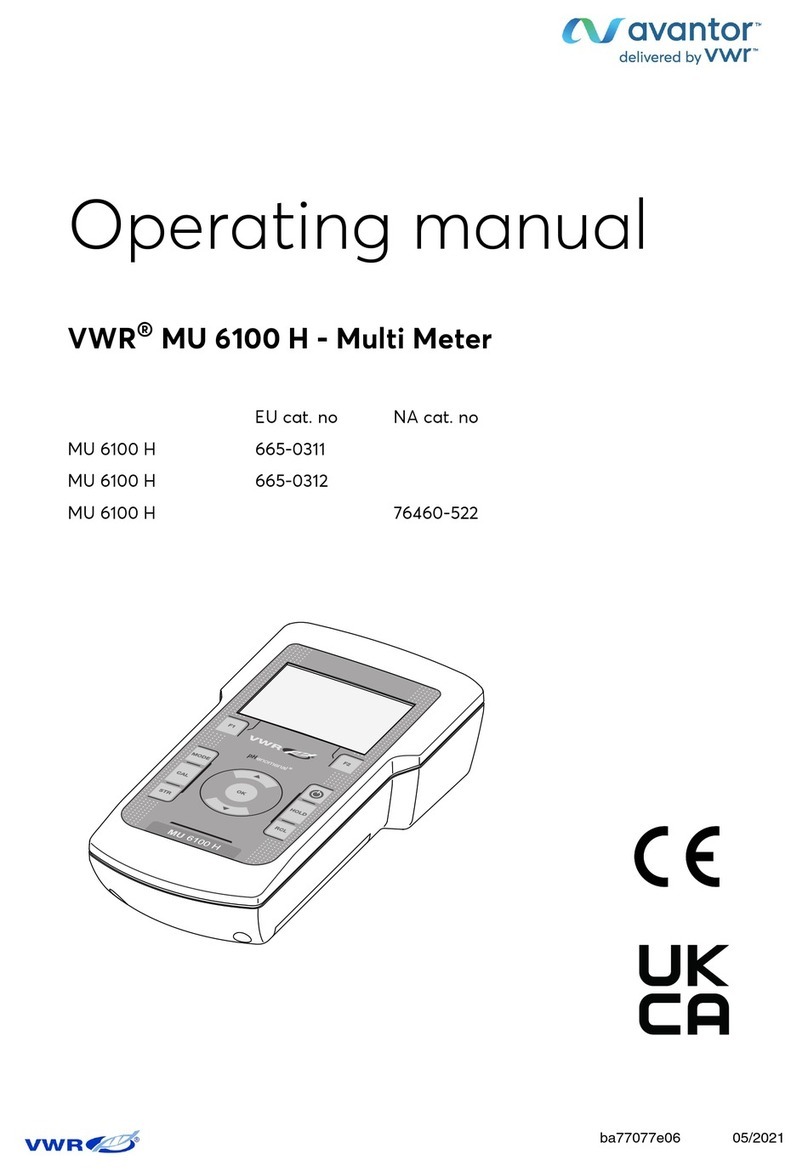
wtw
wtw VWR MU 6100 H operating manual
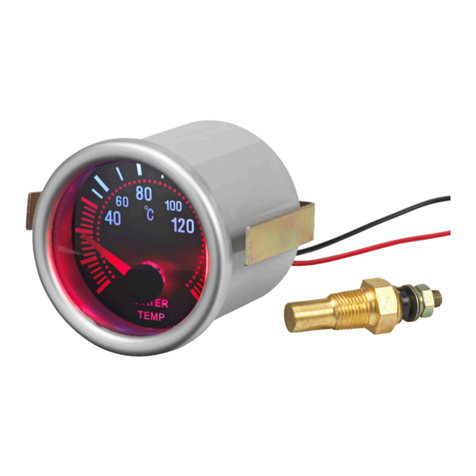
Hamron
Hamron 619-569 User instructions
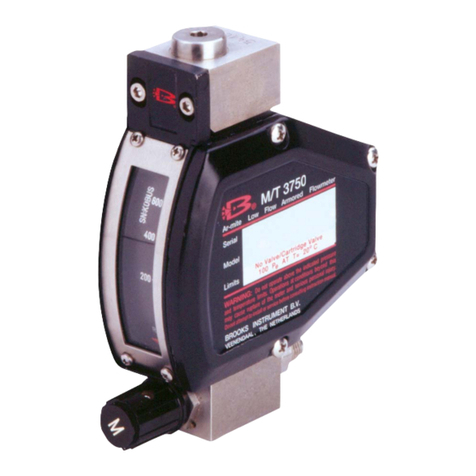
Brooks Instrument
Brooks Instrument Ar-Mite MT 3750 Installation and operation manual

Seca
Seca 207 manual
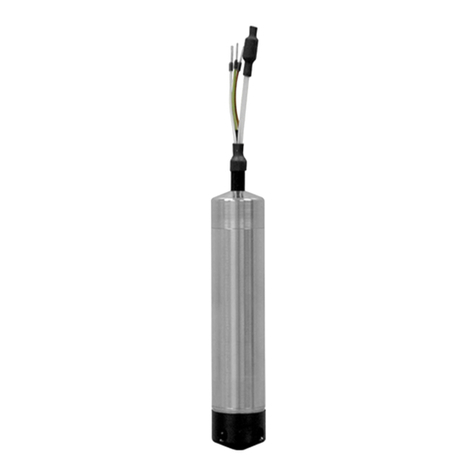
Winters
Winters LM7 Series Installation and operation manual
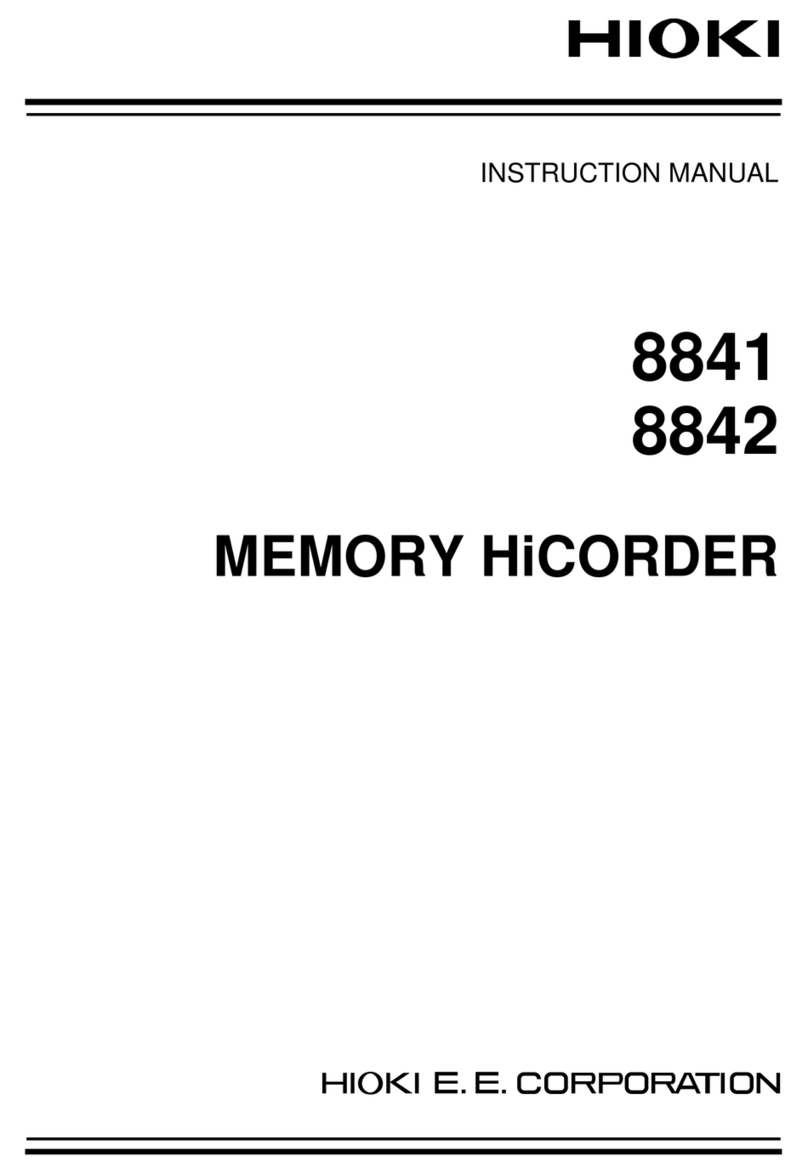
Hioki
Hioki 8841 instruction manual

BEACMED
BEACMED evoStim E user guide
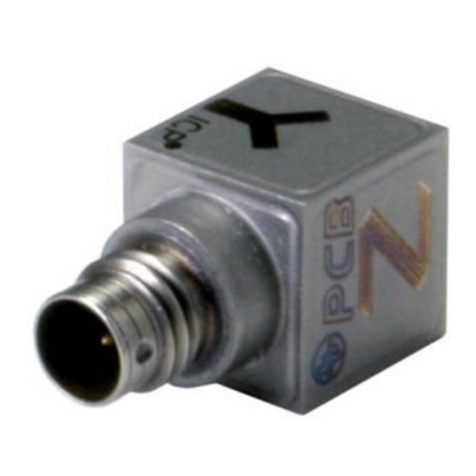
PCB Piezotronics
PCB Piezotronics 356A44 Installation and operating manual
